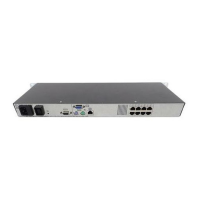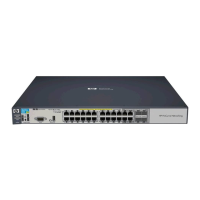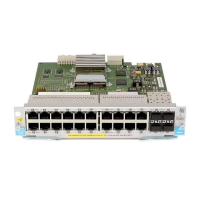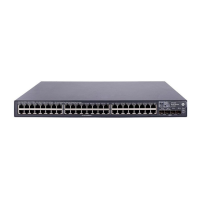67
A device has independent roles in different spanning trees. It can act as the root bridge in one
spanning tree and as a secondary root bridge in another. However, one device cannot be the root
bridge and a secondary root bridge in the same spanning tree.
A spanning tree can have one root bridge only. If two or more devices are designated as the root
bridge in a spanning tree at the same time, the device with the lowest MAC address wins.
When the root bridge of an instance fails or is shut down, the secondary root bridge (if you have
specified one) can take over the role of the primary root bridge. However, if you specify a new
primary root bridge for the instance then, the one you specify, not the secondary root bridge will
become the root bridge. If you have specified multiple secondary root bridges for an instance, when
the root bridge fails, the secondary root bridge with the lowest MAC address is selected as the new
root bridge.
Configuration restrictions and guidelines
• You can specify one root bridge for each spanning tree, regardless of the device priority settings.
Once you specify a device as the root bridge or a secondary root bridge, you cannot change its
priority.
• You can configure the current device as the root bridge by setting the device priority to 0. For
the device priority configuration, see "Configuring the device priority."
Configuring the current device as the root bridge of a specific
spanning tree
To configure the current device as the root bridge of a specific spanning tree:
Step Command Remarks
1. Enter system view.
system-view
N/A
2. Configure the current device
as the root bridge.
• In STP/RSTP mode:
stp root primary
• In PVST mode:
stp vlan vlan-list root
primary
• In MSTP mode:
stp [ instance instance-id ]
root primary
Use one of the commands.
By default, a device does not
function as the root bridge.
Configuring the current device as a secondary root bridge of
a specific spanning tree
To configure the current device as a secondary root bridge of a specific spanning tree:
Step Command Remarks
1. Enter system view.
system-view
N/A
2. Configure the current
device as a secondary
root bridge.
• In STP/RSTP mode:
stp root secondary
• In PVST mode:
stp vlan vlan-list root secondary
• In MSTP mode:
stp [ instance instance-id ] root
secondary
Use one of the
commands.
By default, a device
does not function as a
secondary root bridge.
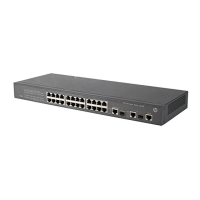
